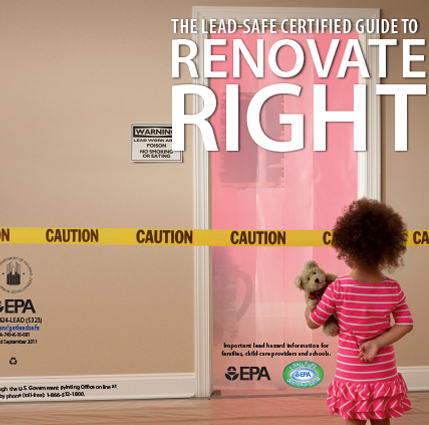EPA Enforces Lead Paint Removal Practices

Recent cases against renovation contractors allegedly failing to follow strict lead paint removal guidelines serve as a warning to make sure your company knows the laws. A recent settlement reached between the U.S. Environmental Protection Agency (EPA) and an Illinois-based renovation contractor regarding alleged lead paint violations shows the EPA’s seriousness in enforcing the Federal Lead Renovation, Repair, and Painting Rule (RRP Rule).
According to the EPA, through customer complaints, investigators discovered the company frequently subcontracted work to uncertified firms and did not use lead-safe work practices, perform required post-renovation cleaning, provide the EPA-required lead-based paint pamphlets to occupants, or establish records of compliance. Under the settlement, the company was required to pay a $400,000 penalty and implement $2 million of lead-based paint abatement work in lower-income properties located in Chicago area communities with a higher incidence of childhood lead poisoning.
“Companies that renovate homes built before 1978 must ensure that they hire EPA-certified contractors and follow other EPA rules requiring lead-safe work practices,” said Assistant Attorney General Todd Kim of the Justice Department’s Environment and Natural Resources Division. “We will take aggressive action against companies that do not take these important steps.”
Lead paint poses a significant health hazard, especially for children and pregnant women. When lead paint deteriorates or is disturbed during renovations or remodeling, it can release lead dust and fumes that can be inhaled or ingested. Even small amounts of lead can cause serious health problems, including learning disabilities, behavioral problems, and neurological damage.
The RRP Rule requires that contractors performing renovation, repair, and painting projects that disturb lead-based paint in pre-1978 homes, child care facilities, and schools be certified by the EPA and follow specific lead-safe work practices.
Here are some key guidelines for contractors under the RRP Rule:
- Certification: Contractors must be certified by the EPA or an EPA-authorized state to perform renovation, repair, and painting activities that disturb lead-based paint.
- Training: Individuals performing the work must be trained in lead-safe work practices, including how to contain dust and debris, minimize exposure, and clean up thoroughly.
- Work practices: Contractors must follow specific work practices to minimize the creation and spread of lead dust during renovation. This includes using plastic sheeting to contain the work area, using special tools to minimize dust, and cleaning up thoroughly after the work is complete.
- Record-keeping: Contractors must maintain records of their work practices and provide them to their clients upon request.
One of NARI’s Code of Ethics states members take appropriate action to preserve the health and safety of employees, trade contractors, clients and the public.
NARI offers for sale the “Environmental Protection Agency Renovate Right” printed brochure for remodelers to share with their customers. It provides important lead hazard information for families, child care providers and schools. Visit the
NARI store to purchase.
Failing to follow lead paint removal guidelines can result in hefty fines and legal action. In addition, contractors and property owners may face lawsuits from individuals who have been harmed by exposure to lead paint. Learn more about certification and training at
www.epa.gov/lead.
Note: EPA certification does not apply in Alabama, Delaware, Georgia, Iowa, Kansas, Massachusetts, Mississippi, North Carolina, Oklahoma, Oregon, Rhode Island, Utah, Vermont, Washington, and Wisconsin, or in the Bois Forte Tribe. If you work in one of these areas, you must apply directly to their program.
| 5/26/2023 11:29:22 AM |
0 comments